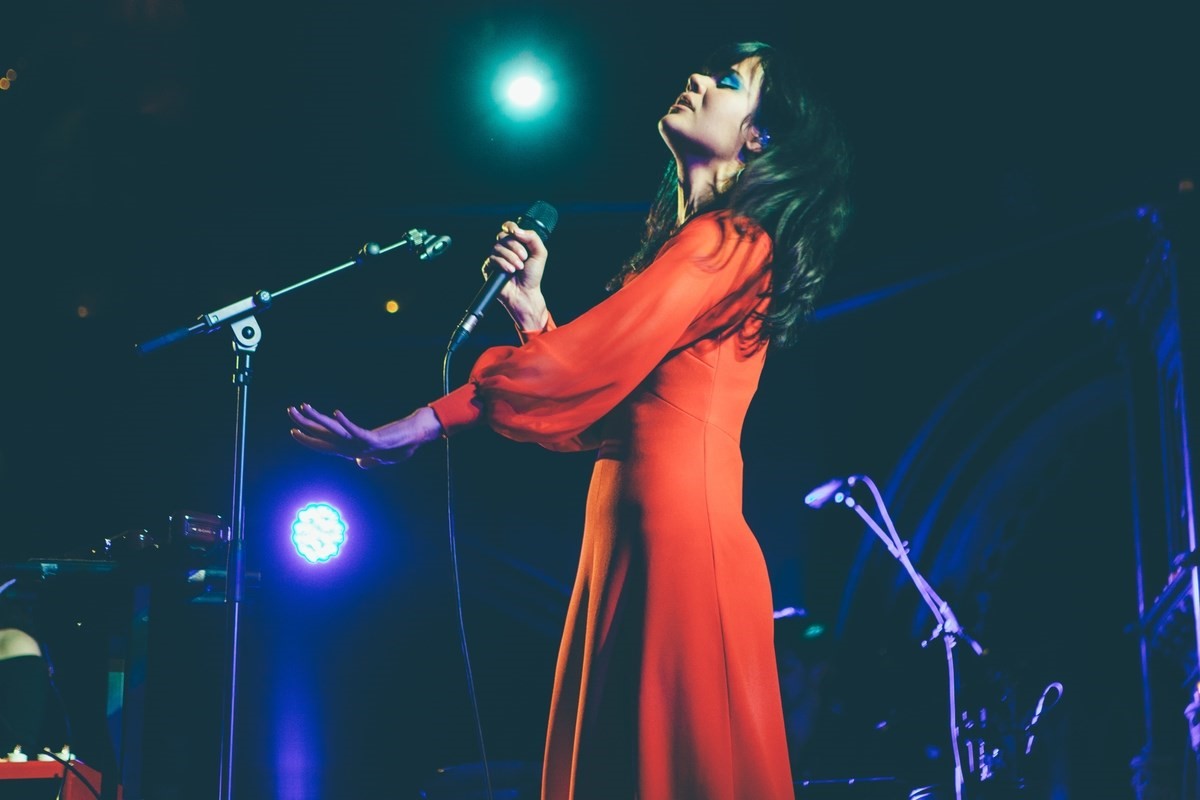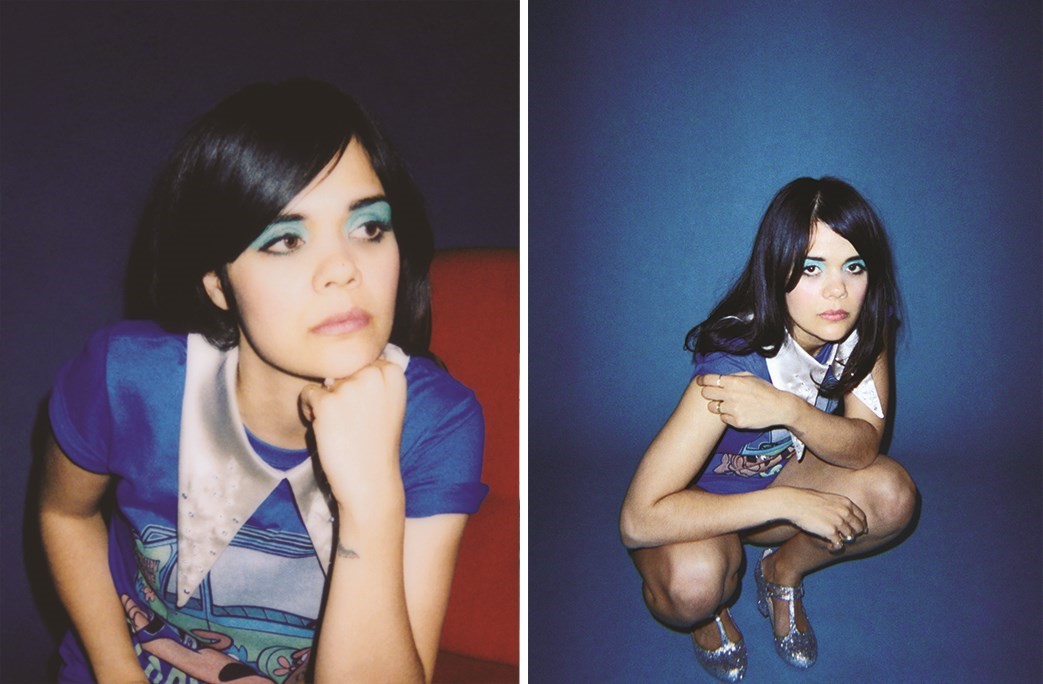Sharing stories is an integral part of human nature. Today, immersive installations, epicurean encounters and video games can all be used to spin a narrative, yet music and film still reign supreme, and both are employed to enthralling effect on The Bride, Natasha Khan’s fourth record as Bat For Lashes. The tale relayed by this audiovisual tour de force is one of tragedy, as a wife-to-be loses her betrothed in a fatal crash on her wedding day; the audience following her as she struggles with grief, doubt and the true meaning of love, before eventually finding the power to begin again; stronger, alone.
“This is the pinnacle of everything I've done until this point,” Khan says, whilst curled up in the shade on the roof of London’s Ace Hotel. “It’s an exciting time as I am changing, and into something that's a lot more multi-dimensional. I still feel a bit like I don't know where I fit, but I've made an album, a storytelling album expressed cinematically, and I think that suits me. The first one was like that, but I didn't realise it.” And it seems, The Bride, also evokes her 2006 debut in its purity of creative expression. “It has come full circle as Fur and Gold just flowed and that expression felt so much me; it was so much a part of my soul.”
The concept for The Bride came to Khan as a mental image that she then captured in a monoprint. “Around that time, I had a filmic head on as I was thinking about scripts and reading interviews with Kubrick and Lynch on Lynch and books on screenwriting,” she says, “And I remember drawing a bride with this huge veil coming down from the sky over the top of a mountain and this car on fire at the bottom and thinking, ‘Oh her husband's in that car’.” The visual was to set the course for two years of creative endeavour by Khan and her collaborators as she marshalled the audio-visual project to fruition.
Los Angeles-based photographer and artistic cohort, Neil Krug, was first to be invited into the world of The Bride. “I texted him the title and he sent me these amazing images of actresses wearing veils in old films, so the whole mysterious feel of it started to be conjured, then I came up with a feature film-length synopsis which became the album.” The narrative unfurled as a stream of consciousness and, as it grew, its power to convey insight into human nature and self-discovery became ever more apparent. “I realised it was a construct that served as a metaphor for relationships which allowed me to go deeper into this emotional terrain with its cycles of death and rebirth; grieving the loss of the romantic ideal and realising that no one else can fill that void,” she says. “It's humbling, heart-warming and sad to accept that we are just on our own, we come into this world and die alone. It's the biggest journey of our lives and yet it seems to be the last thing people come round to.”
With the conceptual framework laid out, Khan worked diligently to ensure that each element was in service of a cohesive whole, from the writing of those heart-rending songs, prior to their recording and producing in Woodstock with the assistance of Simone De Felice; to the meticulous hand-colouring of polaroid stills for the artwork, in partnership with Krug; to finer details such as the Bride’s lurid blue eye shadow. “Absolutely every aspect has been overseen by me and that's why it feels so fully fledged. It's indisputable that it's come from one vision.” A statement exemplified by her self-directed video for single, In God’s House [see above], shot in a desert location intended to match the turmoil of The Bride’s psychic landscape.

Conversely, Khan’s cognitive terrain is less turbulent than ever which she partially credits to transcendental meditation. Indeed, a portion of the proceeds from her church-staged live shows is being donated to the David Lynch Foundation, an organisation that teaches transcendental meditation for free to at-risk individuals such as prisoners and PTSD-sufferers. “People close to me have had serious mental health issues,” explains Khan, “and the meditation helps me to deal with this crazy world. It also reminded me of the beauty in ritual. Weddings are a ritual, meditations are a ritual, prayer is a ritual and we need them to punctuate our time on earth. Also as a tool, it's very practical. It helps me focus and streamline my relationship with the collective unconscious. And the album also feels like it comes from that Lynchian place of dream-states and subconscious fears; all those things he deals with, I resonate with.”
The feeling of deep connection that Khan accesses when meditating is also drawn upon when she performs. “I've always done that when I've played live. It’s like what I imagine being the storyteller of a tribe might be,” she says, referring to the trance-like state she conjures on stage, “and in a past life maybe that’s what I was.” And watching her dynamic form, clad in a scarlet wedding dress and black veil, command the Union Chapel’s stage during The Bride’s exhilarating London debut, it’s easy to envisage her captivating crowds such as these thousands of years ago.

'The Bride' by Bat For Lashes is released on July 1, 2016. See Bat For Lashes on tour in the US this summer.
